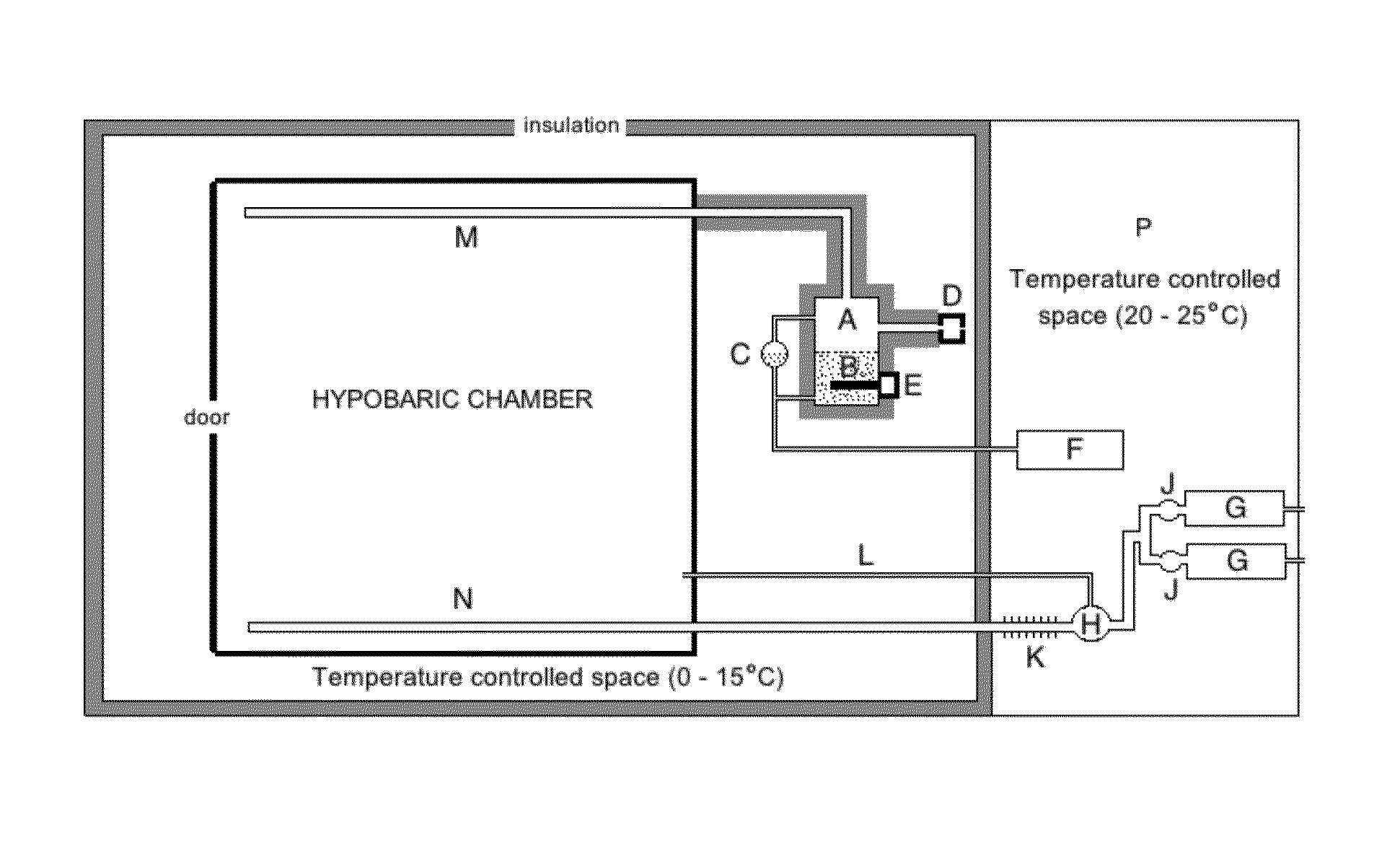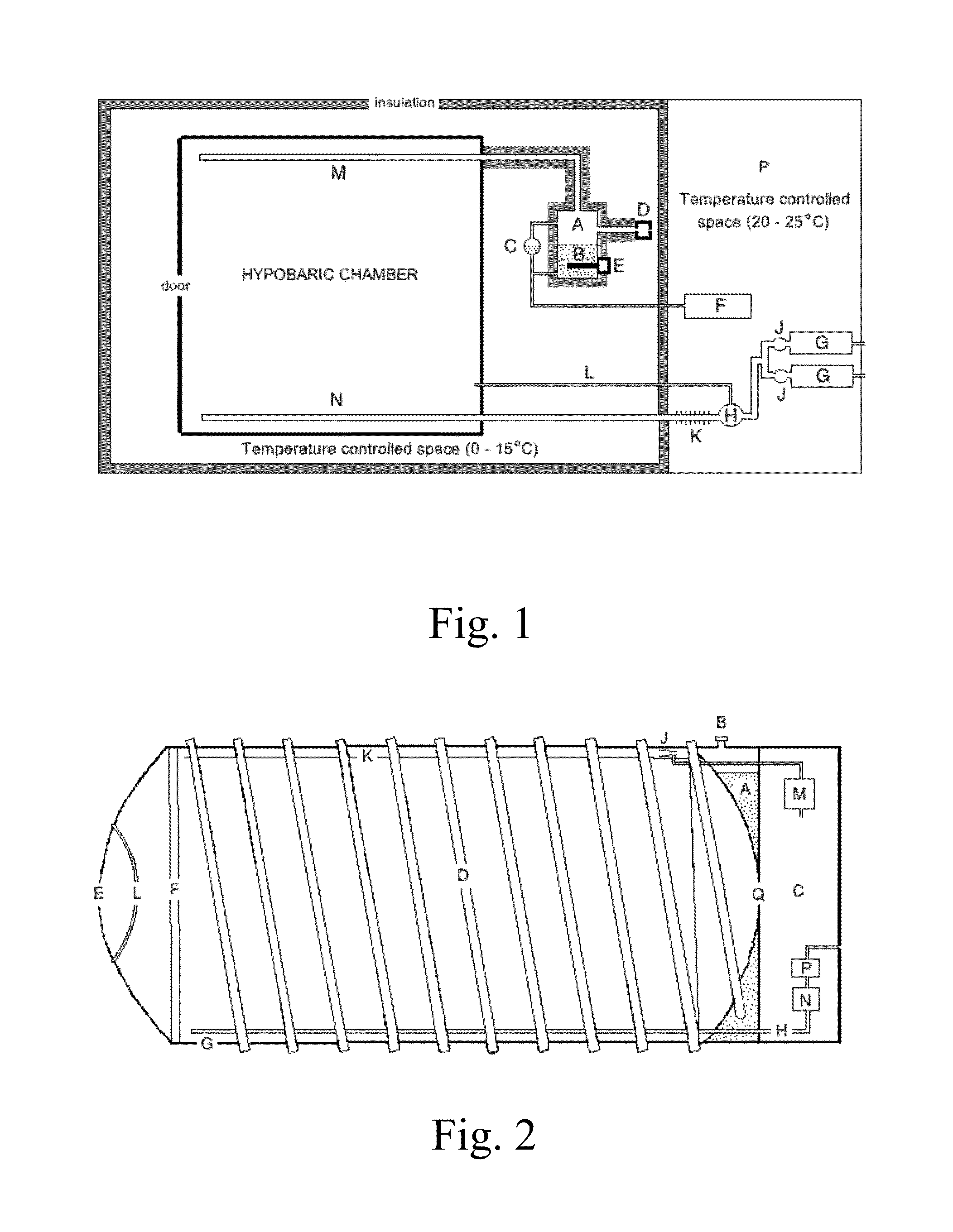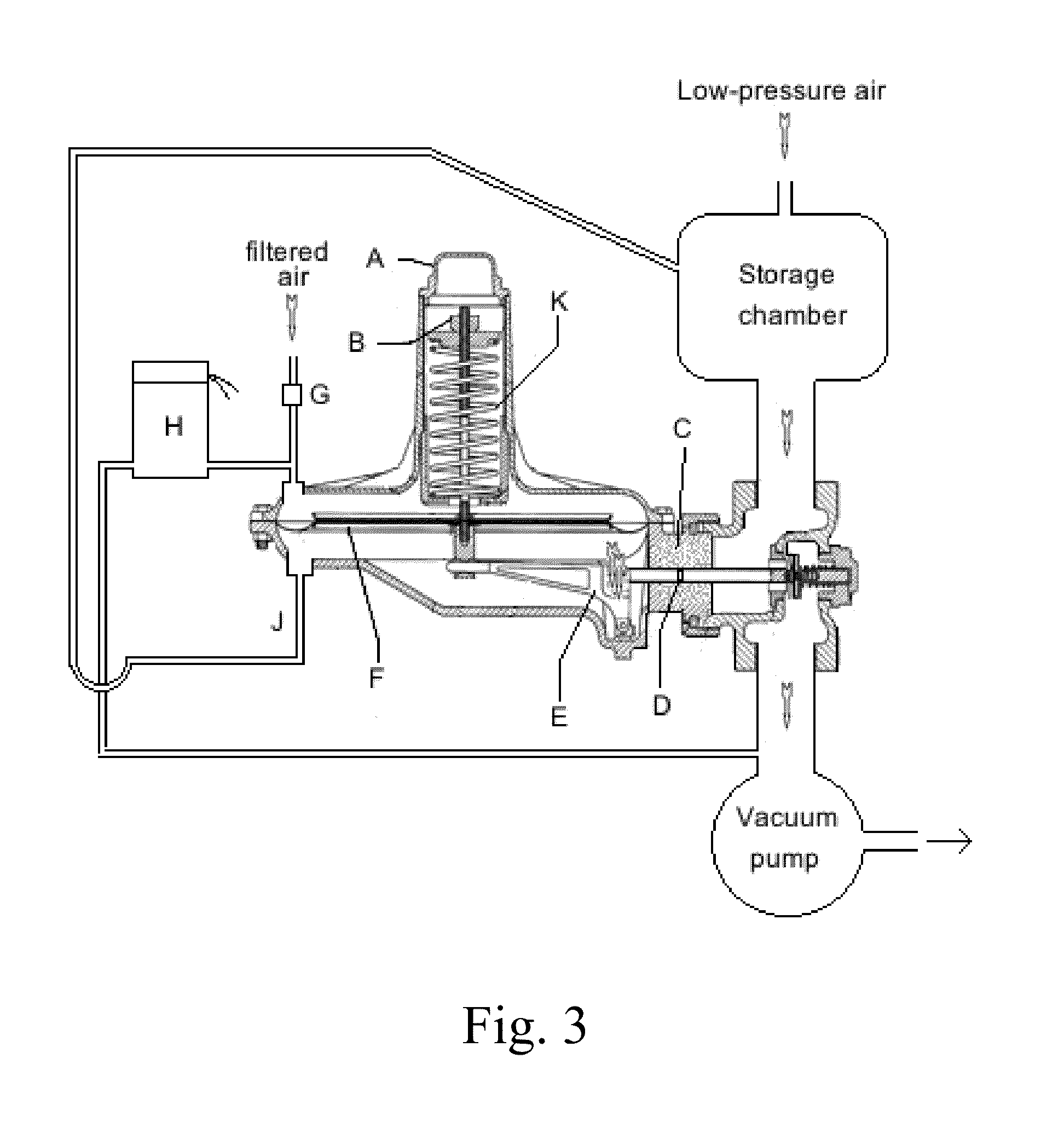Controlled and correlated method and apparatus to limit water loss from fresh plant matter during hypobaric storage and transport
a technology of low pressure and plant matter, applied in lighting and heating apparatus, heating types, domestic hot water supply systems, etc., can solve the problems of insufficient reference to absolute pressure, inability to use methods as vacuum regulators, and ineffective heat transfer by convection, so as to reduce the weight loss of transported plant matter, reduce the pumping speed, and reduce the effect of weight loss
- Summary
- Abstract
- Description
- Claims
- Application Information
AI Technical Summary
Benefits of technology
Problems solved by technology
Method used
Image
Examples
example
Hypobaric Storage of Fruit, Vegetables and Flowers
[0077]At 10° C. a papaya's respiratory inversion point at atmospheric pressure occurs at 1 to 2% O2, in LP at 0.08% O2 (FIG. 6 in EP20100267144). Papayas can be stored at 10° C., 15 mm Hg (0.08% O2) for at least 3-4 weeks, and at the same temperature papaya experience low-O2 injury within a few days in CA at 2, and in LP between 0.02 to 2. See Burg, 2004. At 13° C. mangoes suffer low-O2 injury in CA at 2, in LP at and below 0.078% O2 (Table 3), and at the same temperature mangoes can be stored in LP for 8 weeks at 15 mm Hg (0.1% O2). Chrysanthemum blooms are well preserved for 42 days at 0° C., 10 mm Hg (0.14% O2), and green beans have been successfully stored for 38 days in 0.08% O2 at 7.2° C., 10 mm Hg, but green beans and chrysanthemums are severely injured in CA at 0.1% O2. Avocados have been stored in 0.1% O2 for 49 to 60 days at 13° C., 15 mm Hg, but in CA low-O2 injury occurs within one day in 0.1 to 0.4% O2. See Burg, 2004.
[0...
PUM
 Login to View More
Login to View More Abstract
Description
Claims
Application Information
 Login to View More
Login to View More - R&D
- Intellectual Property
- Life Sciences
- Materials
- Tech Scout
- Unparalleled Data Quality
- Higher Quality Content
- 60% Fewer Hallucinations
Browse by: Latest US Patents, China's latest patents, Technical Efficacy Thesaurus, Application Domain, Technology Topic, Popular Technical Reports.
© 2025 PatSnap. All rights reserved.Legal|Privacy policy|Modern Slavery Act Transparency Statement|Sitemap|About US| Contact US: help@patsnap.com



